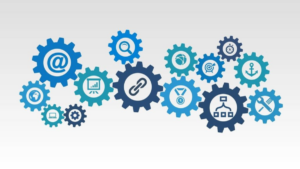More comments on the latest IPA Bellwether Report from marketing experts across the industry, including Bluestripe Communications (owned by Bluestripe Group, owner of NDA) clients and other industry executives. Part one can be read here.
Paul Coggins, CEO and Co-founder, Adludio
“Digital transformation remains at the top of the agenda for 2022 as marketing budgets reach highs not seen since 2014, with online and ecommerce being major recipients of investment.
“As budgets expand, mobile advertising will become an even more saturated market, meaning brands will need to deliver ad campaigns that guarantee engagement against serious competition. Despite this, true engagement is often overlooked, with technology and tools instead focusing on the lower parts of the marketing funnel. But this is ineffective if the campaign is lost amongst a sea of mobile ads. Rather, the creative and engagement are intrinsically linked, with the design of the campaign the real differentiator. In addition, engagement is more than a video view, it’s an interaction between brand and consumer, and technology can help ensure that it is as engaging as possible.
“Thankfully, marketers can now seek the assistance of innovative, proprietary technologies, like those which use AI-based algorithms. These leverage interactivity and historical creative data to target audiences with engaging ads. This will shift targeting away from third-party data and social demographics toward an approach that is built on first-party data. This is more appropriate for the cookieless world and data-safe media buying. To remain competitive in this crowded market, budgets should be channelled into technologies such as these.”
Jeremy Hine, CEO, MullenLowe Group
“The cost of living is rising rapidly and we’re living in less stable times than we’ve seen in decades. It’s no surprise, then, that the forecasts for the industry are cautious, at best. Despite this, the fact that marketing budgets are predicted to hit an eight-year high, and the general sense of optimism from Adland, show the resilience of the people in our industry. Adland has its own set of challenges, but it’s through empathy and collaboration that we can create a strong, supportive industry. Above all, it is imperative that we work together and help each other in what will undoubtedly be stormy waters over the coming 18 months as we look to rebuild Adland to its strong, pre-pandemic position, and reverse the pessimism that is beginning to take hold in our industry.
“The expansion of media budgets – above all in online and video advertising – is a real sign of optimism for brands who are looking to push their reach beyond the more traditional communications formats. It also demonstrates the need for those in the ad industry to embrace the full integration of the entire spectrum of marketing communications agencies under one umbrella. It’s no longer sufficient to focus on bombastic, out-of-home campaigns, or beautiful, heart-wrenching TV spots, when media and other, less traditional formats, are king. This report confirms the industry’s strong ambition to keep up with audiences who are increasingly looking to spend their time online. Above all, this shift offers a strong opportunity for creatives to transform their thinking and spread their focus to encompass the entire media landscape.”
Claire Burgess, Director of Delivery, Incubeta
“Our predictions that ecommerce will remain key in 2022 have rung true as 24.1% of IPA Bellwether respondents say they are expanding their marketing budgets and are looking to channel it into new online platforms. It is encouraging to see the market regaining confidence, and reaching budget growth levels not seen since 2014.
“With the final lapsing of Covid restrictions, we are also seeing a return of increased budgets toward offline marketing, and as in-person shopping continues to recover, marketers must remain aware of the importance of omnichannel optimisation. Digital has had large growth over the pandemic and will continue to spearhead shopping, but businesses should not forget about the value of offline experiences. Instead, they should ensure to strike a careful balance between the two, to ensure they are using a mixture of all marketing channels to support the user throughout their whole customer journey.
“New technologies will assist here, and these increased budgets should be directed towards innovation, such as the use of augmented reality to help visualise products.”
Matt White, VP EMEA, Quantcast
“The industry has experienced quite a rollercoaster ride recently, with the pandemic causing budgets to seesaw dramatically. Last quarter saw an increase in marketing spending despite the Omicron variant causing restrictions to be reintroduced, and this quarter follows the same trajectory with marketing budgets increasing yet again. This is hugely positive for the industry after what has been a difficult two years.
“March saw the total removal of all Covid restrictions in England, with consumers once again ready to spend on purchases and experiences that were disrupted by lockdown. Advertisers and marketers are jumping on this trend, creating campaigns that capture the feeling of freedom.
“However, this doesn’t show the whole picture for the UK. Inflation and the cost-of-living crisis mean that the economic situation is precarious, and many consumers will find themselves altering their everyday spending habits. In this instance, an increase in marketing spend is necessary to keep the economy moving; consumers will be less likely to spend money, so campaigns need to be more compelling than ever to attract attention. This economic turbulence may mean that marketing budgets could once again experience many unprecedented peaks and troughs as we continue through the year.”
Łukasz Abgarowicz, VP of Agencies, RTB House
“2022 is shaping up to be one of the most important years in digital marketing – there’s a genuine feeling of change as we march towards the cookieless future. Google’s announcements regarding Topics API and FLEDGE have provided some colour to a new industry built on privacy, but marketers will rightly be hesitant. This hesitancy, and the significant effects of inflation on living costs, may explain why the report highlights an eight-year high in marketing budgets but a lower forecast in ad spend.
“However, with bigger marketing budgets comes an opportunity to tap into new technologies built to navigate the internet of the near future. The most important of which is contextual targeting built on Deep Learning algorithms. Unlike traditional AI, Deep Learning is entirely autonomous, learning and adapting automatically without human input. This technology turns contextual targeting into a highly effective strategy for delivering your message to the right consumers and can be used effectively within the framework set out by Google.
“If used correctly, the forecasted increase in marketing budgets could power the final transformation in the new privacy-first age.”
Matt Andrew, UK Managing Director, Ekimetrics
“In the face of rising inflation, supply-chain disruption and skills shortages, brands need to invest in their future to ensure their approach to marketing effectiveness is holistic, forward-looking and, most importantly, fleet of foot. So, as marketers gear up to spend more than in the previous eight years, we’re seeing a growing trend among big brands for bringing marketing tools like mix optimisation in-house. It’s no easy task and often requires specialist help, but when combined with the right approach to data, this gives brands more ownership and control over their solutions, and provides more transparency and agility in uncertain times.”
Nial Ferguson, Managing Director UK & Ireland, Sourcepoint
“The report shows another robust quarter with marketing budgets at an eight-year high. Despite this, there is a multitude of external factors that could influence business outcomes over the next three months – the rising cost of living, supply chain worries, and the global impact of the conflict in Ukraine are all challenges that marketers must ensure they’re sensitive to.
“These threats to consumer confidence mean that advertisers might be tempted to double down on personalisation tactics to ensure their marketing is impactful and efficient. While consumers are more likely to engage with tailored pathways, they’re also going to be suspicious and frustrated by predatory tracking or inefficient user experiences. Therefore, in Q2, advertisers need to be careful when assessing the balance between personalisation and privacy to make the most of the new investment.
“Advertisers should go beyond a tick-box approach to regulatory compliance, and integrate an ethical approach to data collection into their core functions. The privacy-first future will benefit the publisher, advertiser, and the consumers as these trusted and transparent partnerships create a privacy-centric ecosystem to provide a mutually beneficial environment.”
Niall Moody, Managing Director, Nano Interactive
“The latest IPA Bellwether report shows that the advertising industry is making a strong recovery from the pandemic, with an eight-year high on ad investment. Understandably, however, the last two years have been particularly uncertain for the industry, with the pandemic and the impact of regulations like GDPR as well as the well fabled deprecation of the third-party cookie looming large.
“To succeed in the months ahead advertisers need to re-evaluate their targeting approaches and embrace new innovative solutions that don’t rely on the identity-based practices of old. In addition, out of necessity, we are seeing a growing appetite to find newer, more appropriate metrics to measure the effectiveness of advertising with the growing discussion around the Attention economy being one example.
“Further, we are seeing that changes in consumer behaviour means that the linear path to purchase no longer exists with needs, moods and mindsets evolving by the second. In turn this means brands must now show up at the most relevant time to the most relevant audience and create cut through like never before.
“Advertisers should therefore ensure they are working with technology providers that use deep learning models to analyse live intent signals with advanced contextual understanding to better deliver their messaging. This approach puts people’s privacy interests and brand safety at the core, whilst delivering relevant and timely ads to receptive audiences.”
Richard Williams, Commercial Director, A Million Ads
“Advertisers should go beyond a tick-box approach to regulatory compliance, and integrate an ethical approach to data collection into their core functions. The privacy-first future will benefit the publisher, advertiser, and the consumers as these trusted and transparent partnerships create a privacy-centric ecosystem to provide a mutually beneficial environment.
“It’s great to see marketing budget growth close to an eight-year high. The industry is certainly bouncing back from the pandemic with marketing budgets looking optimistic for 2022/23. As advertisers navigate this new landscape, we have seen audio content rise in popularity, especially with Gen Z audiences.
“With the rising cost of living having a huge impact on consumer behaviour, advertisers need to find creative ways to connect with audiences moving forward – and audio may well be the answer. Dynamic audio, for example, allows brands to tap into contextual data points such as time of day, weather or the listener’s personal preferences. For instance, with Easter approaching, a supermarket might want to promote chocolate for an Easter Egg hunt to drive consumers to their stores. This helps to increase relevancy, thus driving purchase intent.
“As the ad industry continues to recover, advertisers and brands have plenty of opportunities to take advantage of audio advertising, and it is vital that they connect with audiences on a more personal level.”








